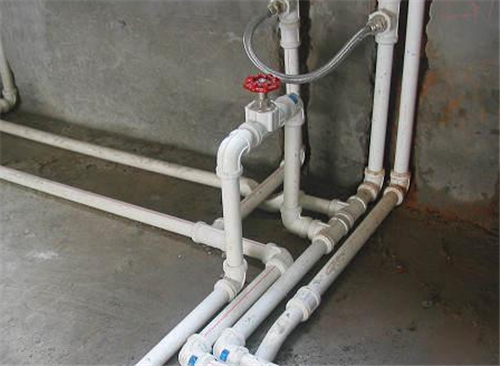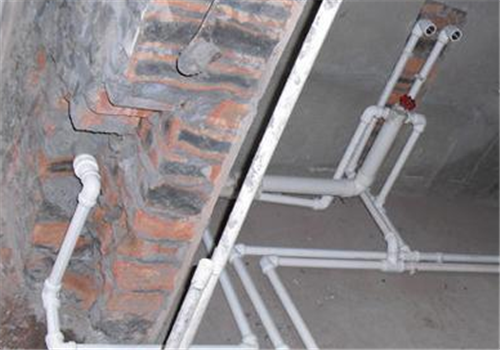Now the development of society as people increasingly designed to improve the water pipes, water pipes perfectly designed to make us more convenient in use, the laying of water pipes is also to be noted that, today small for everyone to share is surface mounted Water pipe installation precautions and precautions for laying water pipes.

Water pipe installation precautions
1. The first step in the installation of surface mounted water pipes is to inspect the pipes and fittings for damage, blisters, cracks, etc.. When installing the kitchen and toilet pipes, consider the final connection between pipes and wall tiles. Size, but also consider the thickness of the wall tiles.
2. Both inside and under the wall, use as few or no connection parts as possible to reduce the potential for leakage. The fittings connecting the accessories must be secure and free from leakage.
3. When designing the water pipe, consider the installation position of the faucet of the washing machine and the layout of the water. At the same time, pay attention to whether the position of the power socket is appropriate. After the waterway is reformed, do the pipeline pressure test. The pipeline pressure should not be less than 0.6MPa. The time is 20-30 minutes.

4. The upper and lower positions of the mixing valve for the wall-mounted shower installation shower should be correct. Confirm the size of the bathtub first, and then install it in the middle of the bathtub. The installation height is 150-200mm at the middle of the bathtub. The jacuzzi will be provided with the outlet according to the model. Reserved. The distance of the mixing valve hole is generally kept at a depth of 150 mm and a surface installation of 100 mm. The position of the outlet is determined according to the height of the bathroom and the individual needs of the owner.
5. The water inlet of the toilet shall be placed as far as possible in the position where the toilet can block the line of sight. The position of the outlet of the toilet shall be determined according to the type of the toilet. Generally, the toilet shall be left at the place about 200 mm from the center of the toilet outlet. .

Laying pipe considerations
1 calculate the approximate amount
Before installing the water pipe, it is necessary to estimate the amount and then purchase the material to avoid buying more or less material, causing waste or lack of materials and affecting the installation.
2. Plumbing and accessories inspection
Before installation, check the water pipes and various fittings to observe whether the pipes are damaged or leaked. The water pipes and fittings must be properly connected.

3. Pipe direction
The top pipe is the safest and the water flows down. If the water pipe goes underground, it will be difficult to find the leaking situation in time. It will cause the floor to deform or even leak downstairs, causing loss to the people. If the water pipe goes to the top, Even if there is water leakage, it can be found by us in a timely manner. It is convenient for us to overhaul and the loss is relatively small.
4. Draw a waterway diagram
After the installation of the water pipe, the waterway diagram of the room should be drawn out to facilitate future maintenance.

Xiao Bian summary: The above is the small series for everyone to share the notice of the installation of surface mounted water pipes and laying pipes Note that the installation of waterways is an important process in the home improvement, need a professional master to complete, hope that the above description can help you , For more information, please continue to pay attention to this site.
Copper(II) Acetate, also referred to as Cupric Acetate, is the chemical compound with the formula Cu(OAc)2 where AcO− is acetate (CH3CO−2). The hydrated derivative, which contains one molecule of water for each Cu atom, is available commercially. Anhydrous Cu(OAc)2 is a dark green crystalline solid, whereas Cu2(OAc)4(H2O)2 is more bluish-green. Since ancient times, copper acetates of some form have been used as fungicides and green pigments. Today, copper acetates are used as reagents for the synthesis of various inorganic and organic compounds.
Copper(II) acetate has found some use as an oxidizing agent in organic syntheses. In the Eglinton reaction Cu2(OAc)4 is used to couple terminal alkynes to give a 1,3-diyne.
Cupric Acetate,High Purity Reagent Grade Copper Acetate,Copper Acetate for Paris Green Fungicide,Pharmaceutical Synthesis Grade Copper Acetate
Jiangsu Kolod Food Ingredients Co., Ltd. , https://www.kolodchem.com